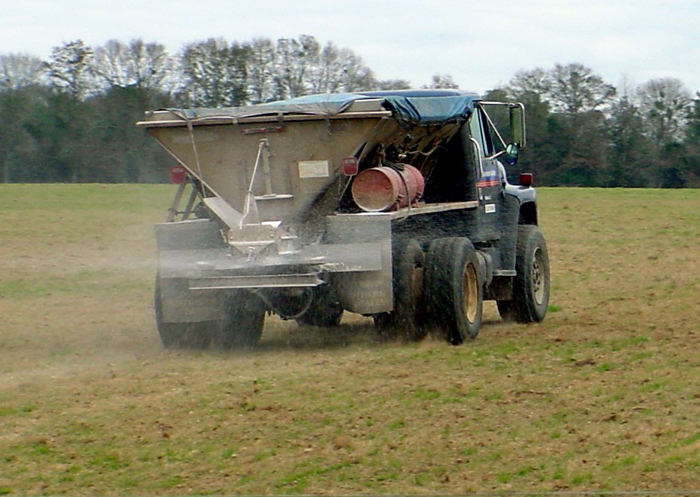
Slow-release fertilizers can reduce nutrient losses from heavy spring rainfall, but still require the 4R’s of nutrient stewardship. Photo Credit: Doug Mayo
The ornamental and turfgrass industries have been using granular slow-release fertilizers for decades. The price has been prohibitive for large-scale agricultural use. In recent years, however, the price has become more affordable, making farmers take another look.
Granular, slow-release fertilizers have a percentage of nutrients in forms that are not immediately available to the plant. These compounds are converted in the soil into forms that are available later to the plant. This conversion to available forms is dependent on temperature and moisture. Because of these characteristics developing the right mix of slow-release and immediately available nutrients is challenging. In a wet year like 2013, a higher percentage of slow-release fertilizer is preferred. In a drier year, you would want a higher percentage of nutrients in the more immediately available form.
The biggest advantage to using these fertilizers is minimal loss of nutrients, making more nutrients available to the plant as it grows and needs it. This also decreases the need for split applications of fertilizers. This advantage means more of the nutrients applied are actually being used by the plant instead of being lost, making this type of fertilizer more efficient. It is also less likely to cause burn when applied. So you can improve efficiency with decreasing nutrient losses, decreasing cost of split applications, and decreasing crop damage.
The initial price for slow-release fertilizers are still higher than conventional fertilizers. However, when you take into account the cost savings from decreased nutrient losses, split applications and crop damage, it becomes more competitively priced. Achieving good results is still dependent on the 4R’s of nutrient stewardship – the right source, the right rate, the right time and the right place. http://www.nutrientstewardship.com/what-are-4rs
Slow-release fertilizer will be part of a demonstration at the University of Florida IFAS Beef and Forage Field Day on October 3, 2014 at the North Florida Research and Education Center in Marianna. More studies are needed on the use of slow-release fertilizers to confirm nutrient efficiency and cost effectiveness on specific crops.
- Field Days are for Education– Recap of the WFREC 2025 Corn & Soybean Field Day - July 25, 2025
- Spray Drone Regulations - July 16, 2024
- 2023 WFREC Crop Variety Trial Results - February 2, 2024
